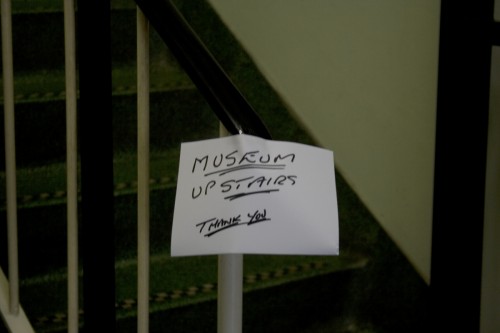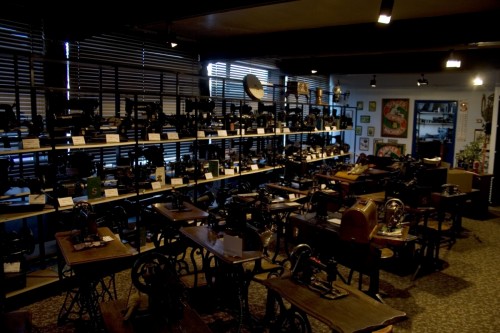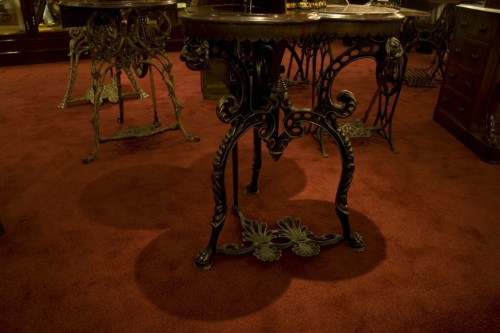In darkest South London can be found a remarkable time capsule sitting in an otherwise ordinary industrial building, for to step past the ordinary doors is to enter a Victorian parlour of industrial delights.
This is the Sewing Machine Museum, and it is quite simply, wonderful.
Open for just a few hours on just one day of the month, this marvel of industrial heritage is as much a delight for the artefacts as for the way they have been laid out.
The museum is an offshoot of a company that makes its living selling and maintaining sewing machines — mainly the large industrial models today — but the owner, Ray Rushton has built up a huge collection of vintage models and in the Millennium year, he opened up the collection to the public.
There are several buildings next to each other on Balham High Road, and you want the southernmost one — and inside, a small handwritten note says to go upstairs to the museum.
Up the stairs you ascend into a municipal room lined and filled and overflowing with small industrial machines of varying ages. A room, a very ordinary room, but piled up with historic delights. However, the best is yet to come, for through a side door is the most astonishing place.
Glass cases, oh so many glass cases displaying a vast collection of small black and gold decorated machines all laid out in a room that size-excepting is right out of a Victorian home.
The plush carpets, the hotel lobby music, the chintz dotted around the place — it should be slightly creepy, but no, somehow it is simply wondrous. Cases full of tabletop exhibits, and full size models with their own desks and foot treadles fill the floor space. A replica of their Morden store fill a corner and an eclectic collection of china fills the gaps.
On my visit, the latest arrival to the collection was on display, awaiting a couple who had travelled down just to see it. Queen Victoria’s own sewing machine is in pride of place, and while it was the sign of a ladies decorum to be skilled with such things, there is doubt as to whether The Queen would have used it.
Amongst the collection of machines are the accessories for the machines, the oils, the needles, the instruction manuals, the cases for the machines, which are often a work of art in themselves.
The collection is actually too vast to point out specific objects of historic note — it is simply a visual feast of metal and wood and china.
The sewing machine is itself a shade under 200 years old — for while the concept was patented by a Brit in 1790, the first machines were not properly developed, and sold until 1814 — by the Austrian Josef Madersperger.
Therefore, next year marks the 200th anniversary of this once domestic necessity. A necessity that is hardly used these days as we outsource our clothes to cheaper countries and clothes once carefully repaired and patched are now seen as disposable objects.
So on the of the machine’s anniversary, pay its museum a visit, for you’ll be leaving in a heady daze of wonderment.
The museum is only open on the first Saturday of each month (except Jan), and only between 2pm-5pm.
Entry is free, although a donation in one of the charity tins is appreciated. A voluminous booklet about the museum’s history is freely handed out.


















I’ll second that.
A most impressive collection, extensively laid out and lovingly presented, in the most unexpected location.
I’ve passed that place more times than I can remember as I used to work 200 yards up the road from it in the mid 90s. Even back then I used to wonder how long it would be there as it’s on a huge plot of land close to the tube, prime for “redevelopment”. Good to see it’s still there & hasn’t been sold out for trendy apartments.
There is a clothing shop that uses an array of sewing machines in its window display. There must be thousands and thousands of them across the chain. Every time I see the shop, I can’t help thinking they should be in a museum.